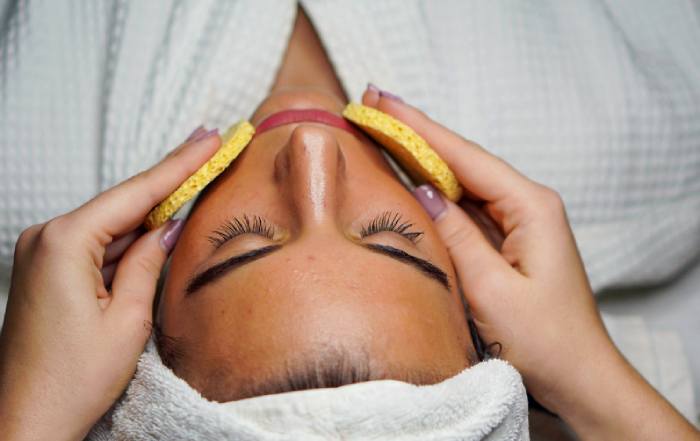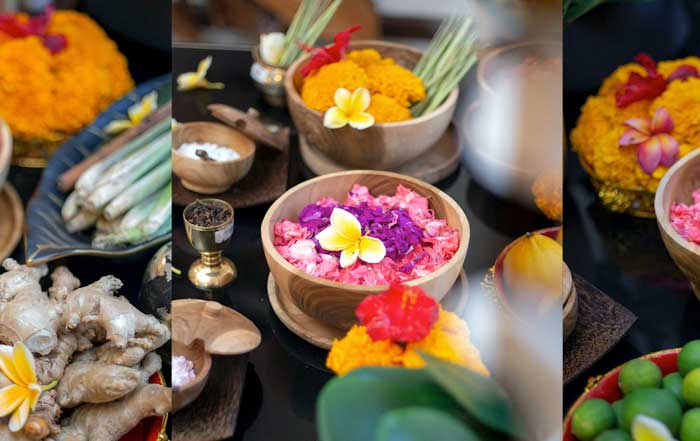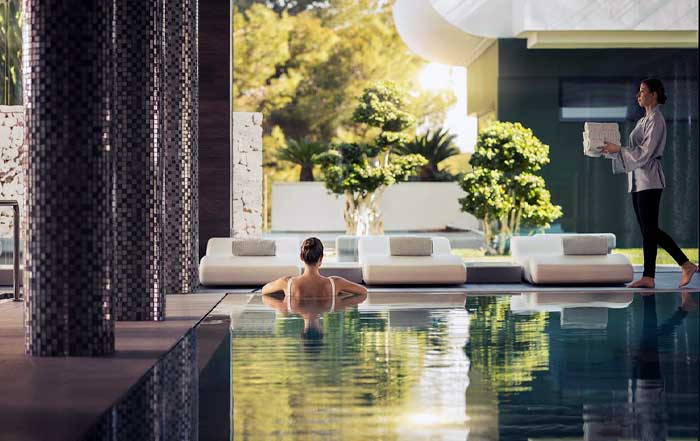As the global pursuit of balance between body, mind, and spirit becomes more prominent in daily life, wellness tourism is emerging as one of the fastest-growing sectors in the travel industry. In 2025, travelers are no longer content with traditional vacations marked by sightseeing and indulgence alone—they are increasingly choosing restorative experiences that combine luxury with purpose. This growing preference is reshaping the hospitality sector in Europe, where the fusion of centuries-old healing traditions and cutting-edge spa innovations has created some of the world’s most sought-after wellness destinations.
The European wellness landscape spans from snow-capped Alpine retreats in Switzerland to thermal springs in Hungary, Mediterranean detox sanctuaries in Spain, and holistic havens in the remote Norwegian fjords. Each destination offers more than mere relaxation—they promise a curated escape that rejuvenates the body, detoxifies the soul, and recalibrates modern life through healing rituals, spa therapies, nutritious cuisine, and tranquil environments.
🧘♀️ European Wellness Destination Finder
Why Europe Leads the Global Wellness Spa Industry
Europe’s enduring leadership in the global wellness space is rooted in its deep cultural heritage around hydrotherapy, thermal medicine, and holistic self-care. Many of the continent’s most revered spas date back centuries, originally catering to royalty and aristocracy, and have since evolved into state-of-the-art wellness centers that integrate Eastern philosophies, Western medicine, and local traditions.
Today, travelers flock to Europe's wellness destinations not only for their therapeutic benefits but for the breathtaking scenery, personalized wellness programs, and the assurance of quality and safety underpinned by stringent European Union health and hospitality standards. This combination of experiential luxury and medical-grade wellness care has established Europe as a magnet for health-conscious travelers from around the world.
For readers of QikSpa’s Wellness Section, this trend is more than a fleeting indulgence—it represents a lifestyle aligned with intentional living, preventive health, and sustainable wellbeing.
Destination Spotlight: Switzerland’s Alpine Wellness Retreats
Switzerland, long admired for its pristine mountain air and crystal-clear glacial lakes, is home to some of the most luxurious wellness retreats in Europe. In 2025, demand for high-altitude detox programs and anti-aging treatments continues to rise, with resorts offering clinical-grade therapies in idyllic settings.
Nestled in the Swiss Alps, Clinique La Prairie in Montreux remains one of the continent’s crown jewels. Renowned for its longevity research and cellular rejuvenation programs, it blends Swiss medical precision with wellness hospitality. Guests undergo DNA analysis, cellular detoxification, and revitalization treatments under the care of leading physicians and therapists, all while enjoying panoramic views of Lake Geneva.
Meanwhile, the Tschuggen Grand Hotel in Arosa offers an equally luxurious, though more holistic, experience. Its Tschuggen Bergoase Spa, designed by architect Mario Botta, is an architectural wonder buried into the mountainside, offering forest therapy, energy rituals, and body detox packages for urban professionals seeking refuge from overstimulation and stress.
For visitors looking to combine travel, relaxation, and holistic healing, these locations underscore why Switzerland remains a global benchmark for wellness excellence.
Explore additional European spa inspirations in QikSpa's International Section for the latest travel insights.
Iceland: Harnessing Geothermal Power for Spa Innovation
Iceland, with its otherworldly terrain and abundant geothermal energy, has emerged as a leading wellness destination. The island nation has taken natural healing to another level by transforming its volcanic landscape into a sanctuary of sustainable spa tourism.
At the heart of Iceland's wellness allure is the Blue Lagoon, located on the Reykjanes Peninsula. Known worldwide for its turquoise geothermal waters rich in silica, algae, and minerals, the Blue Lagoon offers immersive wellness packages that go beyond bathing. Visitors can enjoy in-water massages, guided meditation in lava caves, and skin-care therapies developed in collaboration with local scientists.
Newer to the wellness scene is Sky Lagoon, which opened just outside Reykjavík and offers guests the traditional “seven-step Icelandic bathing ritual”, a process that blends cold exposure, sauna, exfoliation, and thermal soaking for physical rejuvenation and mental clarity. These rituals are drawing global wellness seekers eager for experiences rooted in Nordic purity and sustainability.
Iceland’s appeal isn’t limited to hot springs—it is also a pioneer in eco-conscious wellness, offering carbon-neutral travel experiences and local organic cuisine, all of which resonate deeply with QikSpa’s Sustainable Living Community.
Austria: Where Classical Health Meets Modern Spa Therapy
Austria’s long-standing legacy in medical spa tourism continues to flourish in 2025, especially in towns like Bad Gastein, Bad Ischl, and Vöslau. These historic spa towns, once retreats for European royalty, now host visitors from every continent seeking natural remedies in majestic Alpine surroundings.
One of Austria’s most celebrated wellness hubs is the VIVAMAYR Health Center in Maria Wörth. With its core philosophy based on the Mayr Cure, a detox method focused on gut health and digestion, VIVAMAYR offers a highly personalized approach. Programs include manual abdominal therapies, alkaline-based diets, cryotherapy, and mindfulness coaching designed to reset metabolic health.
In the spa town of Bad Gastein, therapeutic radon treatments—unique to the area—are still popular for treating chronic inflammation and autoimmune disorders. Modern spas such as the Alpentherme Gastein now offer radon inhalation chambers alongside state-of-the-art thermal pools, saunas, and wellness lounges that attract both health tourists and luxury travelers.
Austria’s blend of classical spa traditions and clinical wellness practices positions it as a cornerstone for travelers looking to achieve tangible health outcomes in beautiful settings.
Germany: Precision Wellness Meets Forest Therapy
Germany’s wellness scene is characterized by its Baden-Baden spa heritage, meticulous approach to healthcare, and deep-rooted philosophy in Kurorte—designated health resorts where people have long gone for rejuvenation under the supervision of licensed medical professionals. In 2025, Germany’s wellness infrastructure continues to thrive, blending clinical precision with modern sensibilities.
In the Black Forest region, Brenners Park-Hotel & Spa remains a world-class sanctuary. The resort’s Villa Stéphanie wellness center offers integrative programs combining medical diagnostics, aesthetic dermatology, nutrition, emotional health, and detox treatments. The experience is tailor-made for those seeking wellness that is both indulgent and scientifically grounded.
Beyond its prestigious spas, Germany has made forest bathing (Shinrin-yoku) a mainstream health movement. This Japanese-inspired practice has found fertile ground in Germany’s abundant woodlands and is often integrated into therapeutic retreats for stress relief, immune support, and digital detox. Resorts like BollAnts Spa im Park in the Nahe Valley promote “natural mindfulness” with guided hikes, herbal treatments, and Ayurvedic cuisine in an environment that reconnects guests with the rhythms of the earth.
For more about holistic health environments and wellness-lifestyle integration, explore QikSpa's Health Section.
Hungary: Thermal Springs and Heritage Healing
Hungary offers one of Europe’s most robust spa cultures, steeped in a tradition that stretches back to Roman and Ottoman times. Budapest alone is home to more than 100 thermal springs, and its nickname—"City of Spas"—is well earned. These natural waters are rich in calcium, magnesium, and hydrogen carbonate, offering therapeutic relief for a range of conditions from arthritis to circulatory problems.
Among Hungary’s most iconic wellness experiences is the Széchenyi Thermal Bath, a sprawling neo-baroque complex that merges public bathhouse tradition with modern amenities like wellness massages, aqua fitness, and mud treatments. For those preferring a more exclusive escape, the Spirit Hotel Thermal Spa in Sárvár is internationally recognized for its high-end spa menu, which includes mineral hydrotherapy, wellness diagnostics, and traditional Hungarian healing rituals such as moor mud wraps and salt cave therapy.
Hungary’s affordability, combined with the high mineral content of its thermal waters, makes it a preferred destination for wellness tourists seeking effective treatments at accessible prices. This balance of heritage and affordability speaks directly to QikSpa’s Global Wellness Audience.
Italy: Mindful Indulgence and Mediterranean Healing
Italy’s reputation for beauty, food, and natural abundance is perfectly reflected in its luxury wellness destinations, which offer the essence of la dolce vita—with a healing twist. In 2025, Italy's leading wellness resorts are creating immersive experiences that nourish the soul as much as they treat the body.
Tuscany, with its rolling vineyards and warm thermal springs, is a standout region. The Fonteverde Lifestyle & Thermal Retreat in San Casciano dei Bagni continues to be a leader, combining ancient Etruscan spa traditions with medical spa services. Here, guests undergo mineral water therapies, bioenergetic treatments, and oxygen facial rejuvenation programs, all while surrounded by panoramic countryside vistas.
Further south, Lefay Resort & SPA Lago di Garda delivers a unique blend of energy-based healing rooted in Classical Chinese Medicine. Their Lefay SPA Method incorporates hydro-aromatherapy, moxibustion, and advanced energy diagnostics, creating a holistic healing system that’s both science-backed and soul-enriching.
Italy’s emphasis on artisanal food, mindfulness, and slow living makes it a natural choice for those drawn to a sensory-based approach to wellness. Visit QikSpa's Food and Nutrition Section to discover how Mediterranean cuisine complements wellness.
Spain: Detox, Longevity, and the Art of Renewal
Spain, once known primarily for sun-soaked holidays, is now a prime wellness destination thanks to its growing ecosystem of detox clinics, yoga retreats, and integrated wellness resorts. Spanish wellness culture emphasizes longevity, functional fitness, plant-based nutrition, and mental clarity—all aligned with a Mediterranean lifestyle that favors balance over intensity.
Among the elite wellness centers in Spain, SHA Wellness Clinic in Alicante stands at the forefront. This award-winning medical spa merges Eastern wisdom with Western diagnostics, offering programs in cognitive enhancement, healthy aging, weight loss, and mindfulness. Guests are overseen by multidisciplinary teams including doctors, nutritionists, and spiritual guides, with protocols personalized via genetic testing, biotherapy, and bioenergetic balance.
In Ibiza, once the heart of Europe’s nightlife, a new wave of luxury wellness resorts has emerged. The Six Senses Ibiza resort is redefining the island’s legacy, emphasizing conscious living, emotional healing, and sustainability. From sound baths and energy medicine to organic detox cuisine and aerial yoga, the experience is curated for those who seek transformation through stillness and connection.
For wellness travelers interested in combining relaxation with internal renewal, Spain offers a sanctuary that is both scenic and soul-deep. Tap into QikSpa's Yoga Focus to explore related practices and trends.
France: Elegance, Thermal Waters, and Holistic Beauty
France’s wellness offerings are inseparable from its cultural ethos of refinement, beauty, and balance. In 2025, wellness tourism in France is thriving, particularly in regions with rich geothermal resources and a heritage of therapeutic spa culture. From the Pyrenees to Provence, the country offers sanctuaries where aesthetic beauty meets inner wellbeing.
The Evian Resort, located on the shores of Lake Geneva, is emblematic of this French approach. Known globally for its mineral-rich water, the resort offers detox programs centered on hydration, hydrotherapy, and natural mineral treatments. The Evian Source Spa provides bespoke services, from antioxidant facials to deep muscle treatments, all grounded in the purity of the environment.
In southern France, the Thermes de Saint-Malo and Thermes Marins de Monte-Carlo continue to lead in thalassotherapy—a practice that utilizes seawater, marine mud, and seaweed to treat inflammation, fatigue, and circulatory issues. These coastal sanctuaries provide a sensory journey where guests undergo marine-based detox treatments complemented by balanced gastronomy and coastal meditation rituals.
Beyond traditional spa therapy, France is also pioneering holistic aesthetic wellness, where luxury skincare and non-invasive rejuvenation techniques are delivered in tandem with emotional and hormonal wellness support. French resorts are now integrating beauty rituals with mindfulness, offering more than surface transformation—they create harmony.
To discover more about this relationship between beauty and wellness, visit QikSpa's Beauty Section.
Portugal: Emerging Star of Conscious Wellness Travel
Portugal has rapidly evolved from a hidden gem to a conscious wellness hotspot. In 2025, its blend of untouched natural landscapes, affordability, and wellness innovation has made it a magnet for those seeking spiritual renewal and sustainable living.
In the forested hills of Monchique, the Longevity Health & Wellness Hotel offers tailored programs combining diagnostics, detoxification, aesthetic medicine, and regenerative therapies. These are aimed not just at restoring health but at extending healthspan, supporting cellular health, and promoting resilience against lifestyle-related diseases.
Lisbon and the Algarve are also home to new-wave wellness resorts that emphasize eco-architecture, slow living, and plant-based nutrition. These resorts attract a younger, environmentally conscious demographic interested in sound healing, mindfulness meditation, and digital detox programs. Many guests come for the climate and culture—but stay for the reset they never expected.
Portugal's model of integrating sustainability, affordability, and luxury mirrors a shift in traveler values. Learn more about these intersections in QikSpa’s Lifestyle Section and Sustainable Living Hub.
Norway: Silence, Solitude, and Wilderness Wellness
In the far north of Europe, Norway is emerging as the new frontier in wilderness-inspired wellness. The Norwegian wellness model in 2025 is built around minimalism, solitude, and the healing power of nature. Here, the concept of wellbeing is not about excess, but about re-connecting with elemental forces: cold air, fjord waters, forests, and silence.
One of the most unique spa experiences in Norway is the Aldour Retreat, located in a remote region near Tromsø. This off-grid resort combines Nordic sauna rituals, ice bathing, and aurora-viewing meditation with sustainability at its core. Guests are encouraged to disconnect from devices and engage in forest immersion, herbal therapy, and storytelling around open fires.
The Farris Bad Spa Hotel, located in Larvik, is another standout, built over a natural mineral spring and offering programs focused on longevity, circulation therapy, and sleep recovery. Known for its minimalist Scandinavian design and clinical-grade treatments, Farris Bad is a blend of clean lines and deep healing.
Norway’s contribution to global wellness is increasingly valued for its ability to reawaken a primal sense of health, rooted not in technology but in rhythm and ritual. Read more about the intersection of nature, solitude, and mental resilience in QikSpa's Wellness Journal.
Slovenia: Boutique Wellness in a Natural Paradise
Tucked between Italy, Austria, and Croatia, Slovenia is one of Europe’s most underrated wellness destinations. Its combination of thermal waters, green valleys, and a strong eco-tourism ethos has catapulted it into the spotlight for travelers seeking a boutique and personalized wellness experience.
In the town of Podčetrtek, Terme Olimia stands out as a leader in integrative wellness. This resort provides high-end detox, anti-stress, and weight balance programs with an emphasis on biohacking and hormonal balance. Facilities include herbal saunas, meditation pods, and nutrition labs where personalized health plans are built from genomic data.
Slovenia also leverages its proximity to nature—forests, rivers, and mountains—to create immersive experiences rooted in forest bathing, thermal walking paths, and mindfulness in motion. In addition, its commitment to organic agriculture supports a wellness model where food, environment, and body care are seen as one continuous system.
As an emerging destination with serious eco-credentials, Slovenia is drawing global attention from travelers seeking healing with authenticity and minimal impact. Learn more about nature-centered retreats in QikSpa’s Travel Section.
Wellness Trends Reshaping Europe in 2025
The evolution of wellness tourism in Europe has entered a transformative phase in 2025. While traditional spa destinations continue to thrive, new priorities—mental clarity, personal empowerment, and professional balance—are redefining the wellness experience. These shifts reflect not only changing travel preferences but also evolving social, environmental, and psychological needs across a post-pandemic, hyper-connected world.
The Rise of Digital Detox Retreats
With digital fatigue reaching an all-time high, one of the most notable trends across Europe’s top spas is the rise of digital detox programs. These are no longer just luxury offerings—they have become essential components of wellness packages, particularly for urban professionals and high-performance individuals suffering from burnout, overstimulation, and anxiety linked to excessive screen exposure.
Retreats in Scandinavia, Portugal, and the Alps now include structured offline experiences involving device-free schedules, journaling, nature immersion, and sensory mindfulness activities. Rather than simply removing devices, these programs guide guests through the psychological rebalancing process, offering realignment through silence, breathwork, and nature immersion.
These programs are especially resonant for QikSpa readers focused on long-term wellness strategies, explored further in the Careers and Productivity Section, where professional vitality meets personal renewal.
Women-Centric Wellness Retreats
Another dominant movement shaping 2025’s wellness scene is the surge in women-focused wellness resorts. These destinations recognize the specific physiological and emotional health needs of women—whether related to hormonal health, fertility, menopause, trauma recovery, or leadership development. From Tuscany to the Balearic Islands, resorts are offering female-led retreats that combine ancient wisdom with modern functional medicine.
Programs include Womb Awakening Rituals, female biohacking, hormonal rebalancing therapies, women’s circles, and empowerment workshops addressing self-worth, body image, and leadership confidence. These retreats often align wellness with life purpose, career reinvention, and emotional healing.
For the global female audience of QikSpa’s Women’s Portal, these retreats represent a profound shift from superficial spa treatments to whole-person care, nurturing the emotional, hormonal, spiritual, and intellectual layers of women’s health.
Corporate Wellness and Executive Resilience
The line between work and wellbeing continues to blur in 2025, and Europe’s wellness industry has responded by designing experiences that cater to corporate wellness, career resilience, and emotional intelligence training. Luxury spas now offer leadership retreats, productivity recovery programs, and psychological performance coaching within wellness environments.
Destinations like Lanserhof Sylt in Germany or Palazzo Fiuggi in Italy offer customized retreats for C-suite executives, team-building through nature therapy, and stress resilience training rooted in neurobiology and somatic therapy. These programs not only restore burned-out leaders but also rewire productivity around mindful intention, creativity, and empathy.
For ambitious professionals and entrepreneurs, wellness has evolved into a strategic advantage—sharpening performance, enhancing communication, and restoring long-term energy. Explore more on how wellness is transforming business leadership and innovation through intentional living.
Final Recommendations: Planning Your Wellness Journey in Europe
Choosing the right spa destination in Europe requires aligning your intentions with the offerings and philosophy of each retreat. Whether you’re seeking cellular regeneration in Switzerland, oceanic thalassotherapy in France, mental clarity in Norway, or spiritual transformation in Spain, the perfect wellness experience is no longer about luxury alone—it’s about purposeful living.
Here are five essential questions to guide your journey:
Are you looking to heal, transform, or optimize?
Do you value clinical wellness, holistic traditions, or spiritual renewal?
Is sustainability and eco-responsibility important in your travel choices?
Would you prefer group retreats or personalized programs?
How do you define luxury: in privacy, precision, or presence?
For travelers seeking guidance, QikSpa offers a curated platform to explore health, wellness, beauty, nutrition, and travel through expert-driven insights.
Conclusion: Europe as the Sanctuary of Wellness in 2025
Europe, in 2025, stands not only as a historical seat of spa traditions but as a global epicenter of integrative, meaningful, and forward-thinking wellness travel. Across its diverse landscapes—snow-covered peaks, volcanic hot springs, Mediterranean coasts, and lush forest interiors—lie sanctuaries that speak to the evolving language of health.
These destinations invite us to slow down, reconnect, and realign with the most essential parts of ourselves. For the QikSpa global audience, these journeys are not about escape, but about empowerment through healing—where spa rituals become lifestyle philosophies, and travel becomes the pathway to a more grounded, vital, and awakened life.








